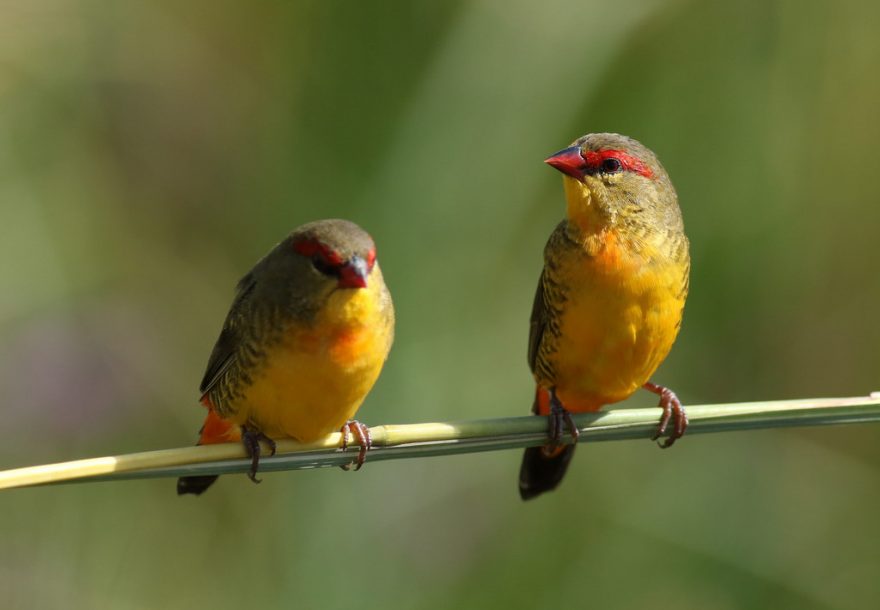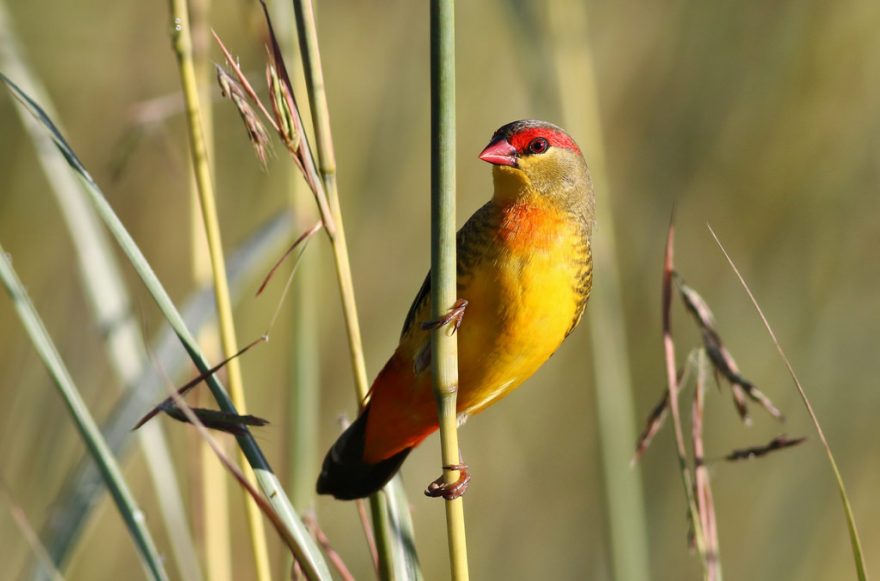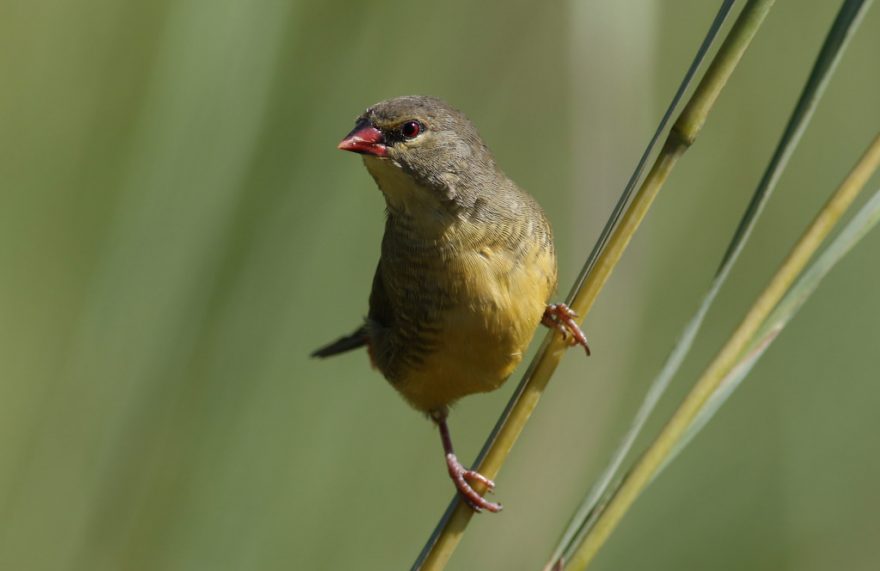The orange-breasted waxbill—also known as the orange-breasted finch or zebra waxbill—is a small bird species found in the grasslands of southern Africa. The species is noted for its bright coloring, peaceable nature, and small size. The species is extremely common in the wild and readily available in the bird trade throughout most of the world.

Housing & Compatibility
Orange-breasted waxbills are peaceful birds that do well in a mixed finch aviary with other placid species. They can be housed as single pairs or colonies. During the breeding season, they will fiercely protect their nest. A sufficiently large aviary should be provided so that each pair is able to establish a small territory.
Orange-breasted waxbills are among the smallest finches kept in captivity, so care should be taken when selecting aviary mates. Avoid larger and more boisterous finches.
Orange-breasted waxbills will hybridize with the green strawberry finch and the red strawberry finch—they should not be housed together or in adjoining aviaries where contact is possible.
They like to spend a lot of time on the aviary floor, so care should be taken to keep the substrate clean and dry.
Diet & Feeding
A quality seed mix including canary seed, various millets and panicum forms the basis of the orange-breasted waxbill’s diet. Seed lacks many essential vitamins and minerals which must be compensated for by introducing other foods. Sprouting seed increases its nutritional value and is a cheap way to improve your birds health. Freshly grown green seed heads should also be offered frequently.
Some leafy green should be provided throughout the year. Kale, bok choy, endive and silverbeet are the most nutritious and will be readily eaten. Spinach can also be given, but only sparingly as it can contribute to calcium deficiency.
Live food is an important component of the orange-breasted waxbill’s diet and should be provided throughout the year – especially during the breeding season. Mealworms, maggots, termites, and small crickets will be consumed readily. Commercial soft finch food mixes can also be provided for an added nutrient boost, particularly when breeding.
Do not feed anything from the list of forbidden foods.

Breeding
Orange-breasted waxbills can breed year-round, however best results are achieved in spring and autumn. The hen bird should be at least 12 months of age. Better breeding results are usually achieved in the second year of breeding.
A wide variety of artificial nests will be accepted, though they have a preference for dense brush well above ground level. They will construct a nest from fine strands of dry grass. Occasionally they will refurbish abandoned nests—either their own previous breeding attempts or those that belonged to other birds.
They typically lay 3-6 eggs in each clutch, which are incubated by both parents for about two weeks. Nest inspections are generally tolerated, however some pairs may be sensitive to disruptions and abandon the nest, so it’s generally best to avoid inspections if possible.
Young birds fledge the nest at three weeks of age and are usually independent a month later. It’s generally safe to leave them in the same aviary as their parents, but make sure you’re using leg rings to tell them apart as they age. Young birds may return to the nest to roost for a couple of weeks after fledging.
Sexing
Very easy to visually sex. Females are significantly duller in coloration and do not possess the red stripe across the eyes.

Health
Orange-breasted waxbills spend a lot of time at ground level. Combined with their diet high in live food, this makes them especially vulnerable to parasite infection. A strict worming and parasite control regime should be implemented to ensure their long-term health.
Healthy birds can be expected to live for approximately 7-8 years of age.
Maybe it is the way my avairys are set up or the nests I offered. But mine always built there nests or utilised a nest in the bottom metre of the avairy. Birds can be contrary.